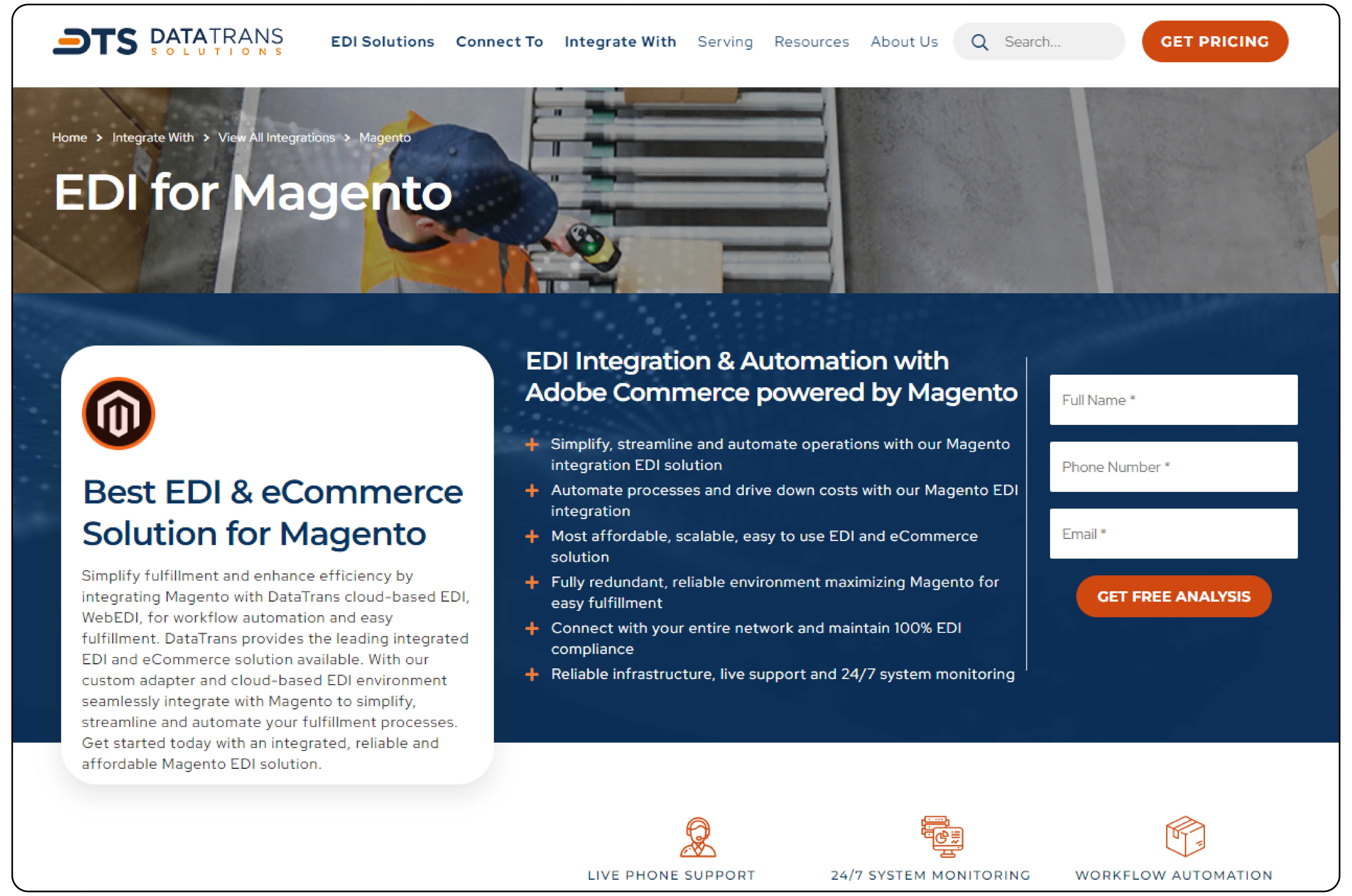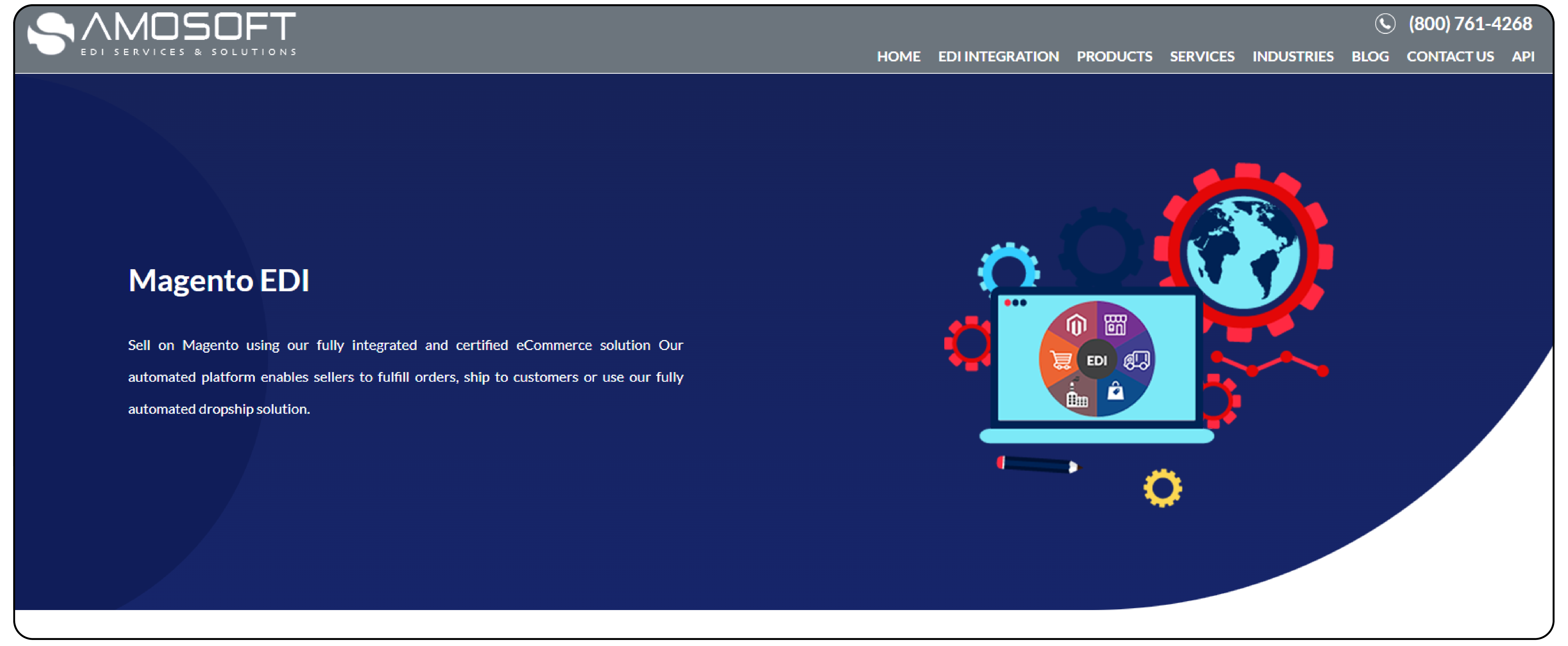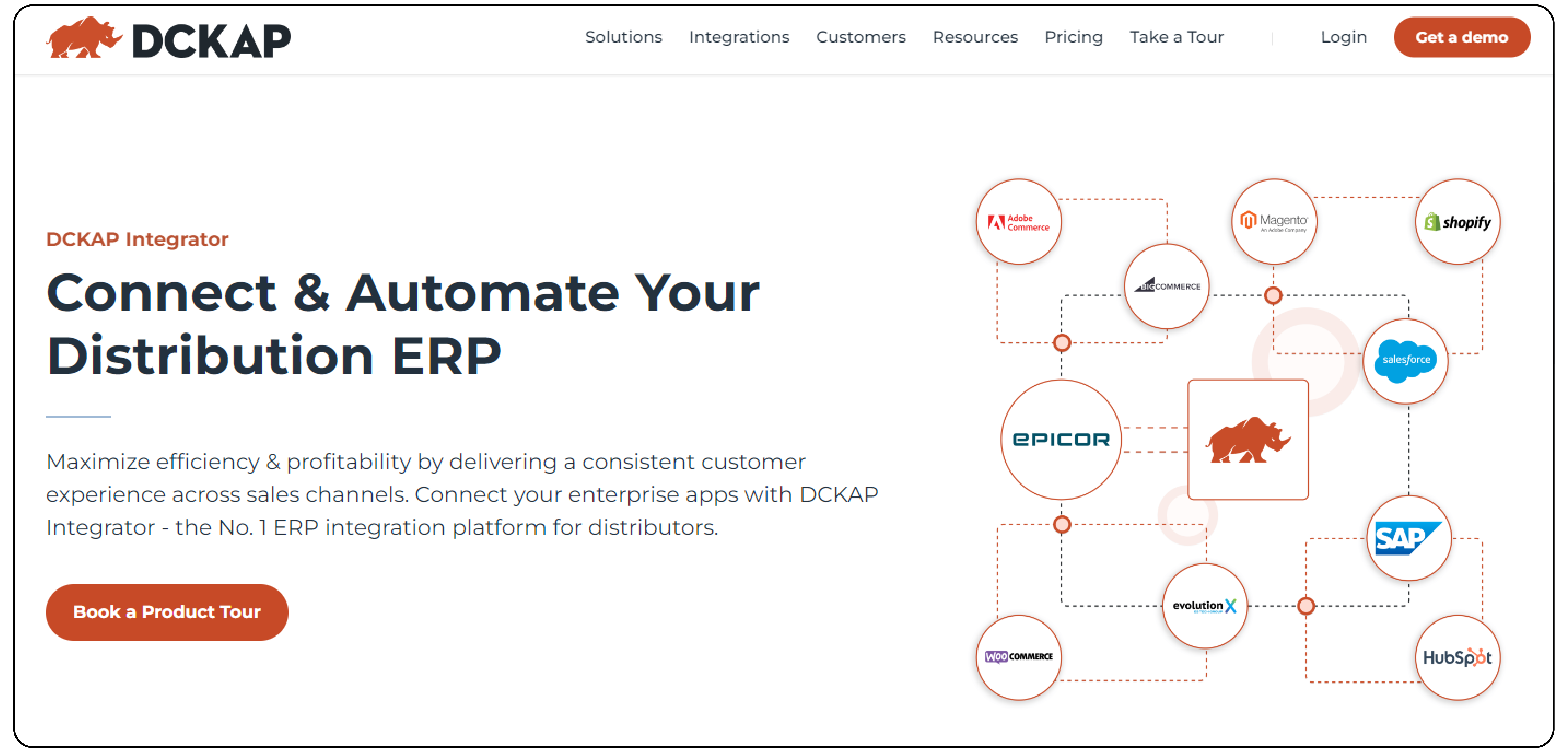
Magento EDI Integration Software: Types & Tools
Want to streamline your Magento store's order processing and fulfillment? Magento EDI integration software can help. It connects Magento with EDI systems to exchange documents electronically with trading partners. This automation boosts efficiency and customer satisfaction. This article explores EDI integration types, how it works, and popular tools.
Key Takeaways
-
Discover how Magento EDI integration software streamlines order processing and fulfillment.
-
Learn about the different types of EDI integration and how they work.
-
Explore the steps involved in implementing EDI integration for Magento.
-
Uncover popular Magento EDI integration ecommerce tools and their features.
-
Understand the benefits of using EDI integration for your e-commerce business.
What is Magento EDI Integration?

Magento EDI integration connects Magento with EDI systems. It enables businesses to exchange documents electronically.
Documents include purchase orders, invoices, and shipping notices. The integration allows Magento to exchange these documents with trading partners automatically. It streamlines order processing and fulfillment workflows.
Setting up Magento EDI integration requires help from an EDI provider or specialist. It helps map data between Magento and the EDI format. EDI providers or specialists can configure the connection using standard protocols and test it to ensure the integration works. Once live, Magento automatically imports EDI orders. This integration generates EDI Magento invoices and shipping notices when orders are processed and shipped.
How EDI Magento Integration Works
| Steps | Explanation |
|---|---|
| Choose an EDI Provider | Research EDI providers. Look for experience in your industry. Select a provider with a proven track record. |
| Map Your Data | Match Magento data fields with EDI system fields. Your EDI provider will assist in mapping the data. Proper mapping ensures accurate data exchange. |
| Test Your Integration | Send test transactions between Magento and the EDI system. Verify data transmits correctly. Testing requires access to the module's root directory. Resolve any issues before going live. |
| Go Live | Finalize the integration after successful testing. Your EDI provider will assist in the go-live process. They should provide ongoing support. Continuously monitor the Magento integration to ensure smooth operation. |
Types of EDI Integration
| Types of EDI Integration | Explanation |
|---|---|
| Direct EDI Integration | It establishes a point-to-point connection between your ERP system and your partners' systems. This method suits large corporations with numerous connections. It allows direct communication using specific protocols. However, managing direct EDI can be complex without standardized protocols. It requires significant technical resources to maintain multiple connections. |
| Indirect EDI Integration | Indirect EDI integration relies on a third-party intermediary, such as an EDI broker or VAN. Your ERP system sends messages to the broker, who then forwards them to your partners in their preferred formats. This method simplifies communication by handling format translations. It is beneficial when partners have varying formatting requirements. Indirect EDI offloads the complexity of managing multiple connections to the intermediary. |
| Hybrid EDI Integration (For Partners Already on EDI) | Hybrid EDI integration combines direct and indirect methods. It allows you to communicate directly with some partners while using intermediaries for others. This approach provides flexibility in integration, accommodating partners' capabilities. You can maintain direct connections with high-volume partners and use intermediaries. You need to do this for smaller or less advanced partners. Hybrid EDI offers a balance between control and simplicity in managing partner communications. |
| Hybrid EDI Integration (For Non-EDI Customers) | This hybrid integration variant supports communication with partners who are not EDI-capable. It uses non-EDI methods such as email with attached PDFs or Excel sheets to exchange data. The intermediary translates these non-EDI messages into formats compatible with your ERP system. This approach enables digital communication with partners regardless of their EDI capabilities. It helps expand your digital reach and streamline data exchange with a broader range of partners. |
6 Steps to Implement EDI Integration for Magento
-
Export an electronic business document from an in-house system or application. The sender initiates the process. Examples include purchase orders for buying goods or services.
-
Transform the exported business document. Convert it from the in-house format to the required standard electronic format. Use data transformation mapping software or EDI translators.
-
Process the EDI business document further. Employ EDI conversion software. Ensure structural accuracy based on agreed-upon EDI standards.
-
Transmit the data from the finalized EDI document to middleware. Use secure communication protocols like SFTP, HTTPS, or AS2. Integrate this transmission into validation software or send it directly to the client.
-
Establish a secure connection for Direct EDI over AS2. Connect businesses directly. Avoid document fees. Enable real-time communication.
-
Receive the file on the receiving party's end. Verify credentials and authenticate the source. Decrypt the file for ingestion into the receiving party's systems. Send a message disposition notice (MDN) back to acknowledge successful delivery.
Popular Magento EDI Integration Tools
1. Data Trans Magento EDI Integration Solution

Data Trans offers a cloud-based EDI and WebEDI solution. It integrates with Magento. The solution simplifies fulfillment. It enhances efficiency through workflow automation. The custom adapter and cloud-based EDI environment integrate seamlessly with Magento. It streamlines processes.
-
Automates operations. Drives down costs.
-
Affordable, scalable, and easy to use.
-
Fully redundant and reliable environment.
-
Connects with the entire network. Maintains 100% EDI compliance.
2. Amosoft Magento EDI

Amosoft provides seamless integrated EDI solutions for Magento. It handles all EDI transactions. These include 846 (inventory), 850 (purchase order), 810 (invoice), and 856 (ASN). The solution integrates with Magento. It also integrates with other ERP systems or software.
-
Easy, straightforward, and affordable.
-
Complete EDI solution for Magento.
-
Handles all required EDI transactions.
-
Integrates with other ERP systems and software.
3. CrossFire EDI Integration with Magento

CrossFire offers a fully managed EDI & API integration service for Magento. The solution is flexible and customizable. It ensures businesses get the most from automation. Many customers trust Crossfire. They provide robust and efficient integration.
-
Fully managed EDI services.
-
Flexible and customizable approach.
-
Ensures robust and efficient integration.
-
Trusted by a wide range of customers.
4. DCKAP Integrator

DCKAP Integrator is an iPaaS solution. It is designed for distributors. The solution addresses common integration challenges. It focuses on EDI. The platform empowers channel partners. They can manage corporate applications. It offers a unified integration experience for CRM, eCommerce, and ERP systems.
-
Easy setup with user-friendly flow design.
-
Advanced mapping and modifiers. Ensures smooth data transfer.
-
Robust reporting and analytics features.
-
Consolidates complex integrations onto a single platform.
Common EDI Protocols
| Protocol | Explanation |
|---|---|
| FTP (File Transfer Protocol) | FTP transfers files between computers over the internet. It is a simple and widely used protocol for file transfer. |
| AS2, AS3, AS4 (Applicability Statement 2/3/4) | These protocols transmit messages through AS servers. The destination server must accept documents from the specific source server. Servers operate based on rules, including sending and acceptance messages. They require confirmation of receipt when the document arrives. |
| OFTP2 (Odette File Transfer Protocol 2) | OFDM2 offers greater flexibility and power of communication. It features data compression, SSL/TLS-based security, and support for large files. OFTP2 requires both sending and receiving servers to use the same protocol. It needs careful configuration and management. |
| HTTP/HTTPS (Hypertext Transfer Protocol/Secure) | HTTP is often used for web-based transactions. It constitutes a simple method for person-to-server and person-to-person file transfers. HTTP resources can be easily located through URLs. It is user-friendly and widely accessible. |
| SFTP (Secure File Transfer Protocol) | SFTP is a secure version of FTP. It adds a layer of protection for data being transferred. |
Common EDI Standards
| Standard | Explanation |
|---|---|
| [UN/EDIFACT] (United Nations/Electronic Data Interchange for Administration, Commerce, and Transport) | The United Nations developed UN/EDIFACT in the 1980s. It is a multi-country and multi-industry EDI language. UN/EDIFACT is widely used in Europe, especially in the retail sector. Its use has spread to healthcare, logistics and transportation, and construction. |
| ANSI ASC X12 | ANSI ASC X12 was created by the American National Standards Institute (ANSI) in the late 1970s. The Accredited Standards Committee (ASC) developed it to provide a uniform messaging standard for North American companies. Although initially designed for North America, it is now used worldwide. ANSI ASC X12 is implemented in nearly any EDI solution. |
| ODETTE (Organization for Data Exchange by Tele Transmission in Europe) | ODETTE represents the interests of the automotive industry in Europe. It develops tools to improve the flow of products and supplies in the automotive value chain. ODETTE is responsible for the ODETTE messaging standard. It also develops specific communication protocols such as OFTP. |
Benefits of Magento EDI Solution
| Benefits | Explanation |
|---|---|
| Faster Transactions | Integration enables real-time exchange of information between trading partners. It leads to faster order fulfillment, payment processing, and overall transaction cycles. Faster transactions improve business efficiency and customer satisfaction. |
| Streamlined Processes | EDI integrations automate manual tasks such as order processing, invoicing, and document handling. Automation increases efficiency and reduces processing times. Streamlined processes help businesses optimize their operations and resources. |
| Cost Savings | EDI integration helps lower operational costs associated with paper-based transactions. Reduced manual intervention minimizes expenses related to printing, mailing, and data entry. Cost savings improve the bottom line and free up resources for other business areas. |
| Improved Accuracy | EDI integrations eliminate manual data entry and associated human errors. Information is transferred accurately between systems, maintaining high data quality. Improved accuracy reduces the risk of errors, discrepancies, and costly mistakes. |
| Enhanced Visibility | EDI integrations provide real-time access to transaction data. Enhanced visibility into supply chain activities, inventory levels, and order statuses enables better decision-making. Proactive management becomes possible with improved visibility. |
| Increased Customer Satisfaction | Faster order processing, accurate invoicing, and improved communication enhance customer service. Better service leads to increased customer loyalty and retention. Satisfied customers are more likely to continue doing business with the company. |
| Scalability and Flexibility | Integrated EDI systems are scalable and adaptable to accommodate business growth. They provide flexibility to meet evolving business needs and changing market demands. Magento scalability and flexibility ensure that the EDI system can support the company's long-term goals. |
| Competitive Advantage | EDI integrations allow businesses to offer faster, more efficient, and error-free transactions. Improved transaction capabilities differentiate the company from competitors relying on manual processes. A competitive advantage helps businesses attract and retain customers in their market. |
FAQs
1. How can a supplier enjoy integrating an EDI solution with Magento?
Integrating an EDI solution with Magento automates order processing. It further helps with invoicing and shipping notifications for suppliers. It streamlines communication with trading partners. It reduces manual errors and improves efficiency. Suppliers can process orders faster. It enhances customer satisfaction and strengthens business relationships.
2. Is it possible to integrate Magento EDI solutions with accounting software like Quickbooks?
Yes, many Magento EDI solutions offer integration with Quickbooks. It allows seamless data transfer between the e-commerce platform and the accounting system. It automates financial processes. It reduces manual data entry. It helps maintain accurate financial records.
3. How does Electronic Data Interchange (EDI) benefit an e-commerce business?
Electronic Data Interchange (EDI) offers many benefits to e-commerce businesses. Exchanging business documents via EDI automates order processing. It reduces errors and improves data accuracy. EDI enables faster order fulfillment. It enhances supply chain visibility. It strengthens relationships with trading partners. It streamlines operations, reduces costs, and improves efficiency.
4. Can Adobe Commerce users use EDI solutions to enhance their e-commerce capabilities?
Yes, Adobe Commerce users can integrate EDI solutions to extend their e-commerce capabilities. Implementing EDI automates order processing, invoicing, and inventory updates. This integration enables efficient data exchange with trading partners. It streamlines workflows and improves operational efficiency.
5. What are the key considerations when choosing an EDI solution for Magento?
When selecting an EDI solution for Magento, consider ease of integration. You should also consider scalability and compatibility with trading partners' systems. Look for a solution that supports necessary EDI transaction sets and communication protocols. Check the provider's experience and support offerings. Ensure the solution can handle your business's specific requirements.
Summary
Magento EDI integration software streamlines e-commerce operations. It improves efficiency by automating document exchange with trading partners. Key benefits include:
-
Faster, more accurate order processing
-
Reduced manual data entry and errors
-
Enhanced supply chain visibility and communication
-
Lower operational costs and freed-up resources
-
Boosted customer satisfaction through quick order fulfillment
For optimal Magento EDI integration, choose managed Magento hosting with EDI services.




